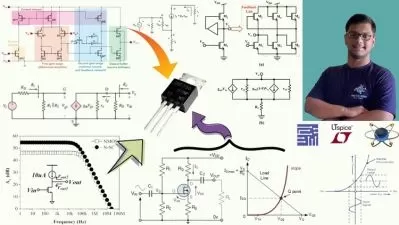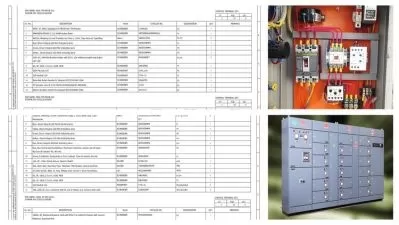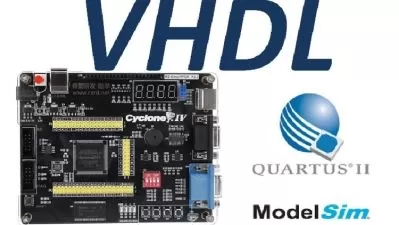Building Processor with VHDL from Scratch
Kumar Khandagle
2:52:07
Description
Step by Step Guide
What You'll Learn?
- Startegies to implement VHDL based CPU
- Buliding Custom Intruction Set to meet resource utilizations
- Strategies to add Program and Data Memory inside Processor
- Strategies to add Jump and Branching Instructions inside Processor
Who is this for?
What You Need to Know?
More details
DescriptionMost of the 21st-century applications require powerful hardware but also along with the centralized controller allowing the development of complex algorithms. As we enter into the AI or Cloud-based devices and as systems complexity is growing daily, the need for incorporating multiple processor instances becomes mandatory as we progress in the AI era. Zynq and Microblaze are two popular alternatives that exist in the market suitable for almost any application requirements. The requirements of using Multiple instances of Processor viz. Multiple instances of Microblaze soft processor or using a hard processor such as Zynq Processor along with single or multiple instances of Microblazer become necessary to independently handle both Data processing and control requirements. The fundamental challenge of incorporating multiple instances of Soft processors like Microblaze is the number of resources consumed for implementing Microblaze on the FPGA. Since FPGA consists of a limited amount of the FPGA resources, hardware and Software partition plays a prominent role in building complex systems. Another popular alternative approach followed by Embedded Engineers to build a Custom CPU /  Processor with the only required functionality thereby saving a large amount of the resources as compared to adding Microblaze instance. The course will discuss all the fundamentals required to build a simple processor/ CPU with VHDL and strategies to test its functionality. After completing this course, you will understand all the necessary skills required to build Complex CPU architecture to meet requirements. Best wishes for crafting your own processor.
Who this course is for:
- Anyone Interested to build Custom CPU on FPGA for Load Sharing
Most of the 21st-century applications require powerful hardware but also along with the centralized controller allowing the development of complex algorithms. As we enter into the AI or Cloud-based devices and as systems complexity is growing daily, the need for incorporating multiple processor instances becomes mandatory as we progress in the AI era. Zynq and Microblaze are two popular alternatives that exist in the market suitable for almost any application requirements. The requirements of using Multiple instances of Processor viz. Multiple instances of Microblaze soft processor or using a hard processor such as Zynq Processor along with single or multiple instances of Microblazer become necessary to independently handle both Data processing and control requirements. The fundamental challenge of incorporating multiple instances of Soft processors like Microblaze is the number of resources consumed for implementing Microblaze on the FPGA. Since FPGA consists of a limited amount of the FPGA resources, hardware and Software partition plays a prominent role in building complex systems. Another popular alternative approach followed by Embedded Engineers to build a Custom CPU /  Processor with the only required functionality thereby saving a large amount of the resources as compared to adding Microblaze instance. The course will discuss all the fundamentals required to build a simple processor/ CPU with VHDL and strategies to test its functionality. After completing this course, you will understand all the necessary skills required to build Complex CPU architecture to meet requirements. Best wishes for crafting your own processor.
Who this course is for:
- Anyone Interested to build Custom CPU on FPGA for Load Sharing
User Reviews
Rating
Kumar Khandagle
Instructor's Courses
Udemy
View courses Udemy- language english
- Training sessions 42
- duration 2:52:07
- Release Date 2023/07/25
















